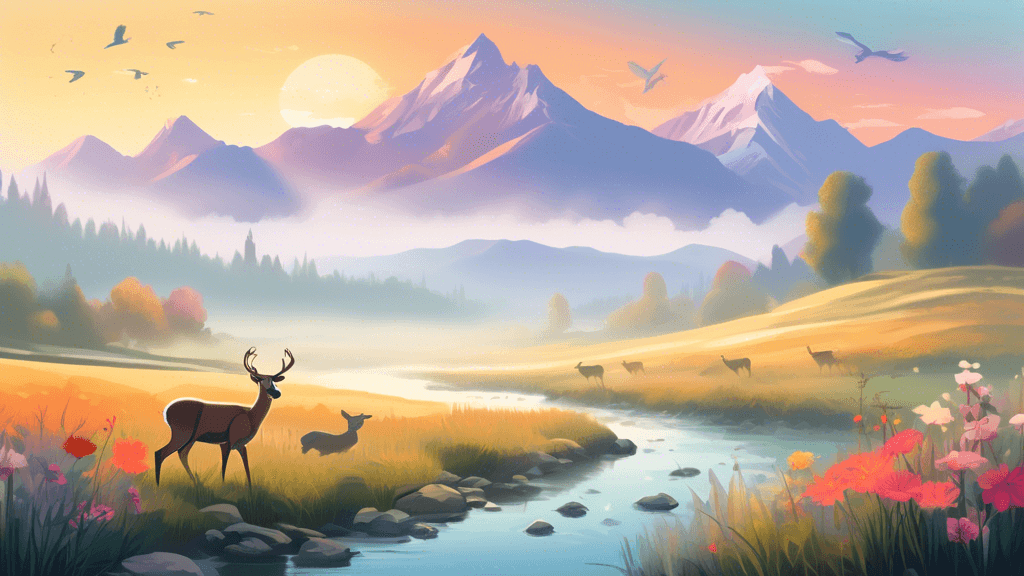
Capturing Harmony: Integrating Flora and Fauna in Landscape Photography
Share
Understanding the Blend of Flora and Fauna in Landscape Photography
Landscape photography is not just about capturing expansive vistas or dramatic skies. At its core, it's also about portraying the delicate balance of life within these spaces. For environmental enthusiasts and photography aficionados alike, merging flora and fauna into a single frame offers a unique narrative—a story of harmony and interaction. But how exactly does one achieve such integration effectively and artistically?
The Art of Composition in Landscape Photography
Mastering the art of composition is crucial when aiming to integrate both flora and fauna into landscape photography. The challenge lies in not merely capturing the elements but creating a composition that speaks to their interrelation.
- The Rule of Thirds: Use this fundamental compositional principle to position key elements within the landscape. Placing an animal on one of the intersecting points, for example, naturally draws the viewer’s eye to it.
- Leading Lines: Use pathways, rivers, or floral arrangements to guide the viewer’s gaze through the scene, perhaps leading them to a grazing deer or a perched bird.
- Frame Within a Frame: Utilize natural frames like tree branches or rock formations to isolate and highlight interactions between various species and their environment.
It’s through these techniques that photographers can create storytelling images, blending insights of natural ecology with visual appeal.
Timing and Patience in Wild Photography
Flora and fauna photography requires not just skill, but also patience and timing. The perfect moment capturing the interaction between animal behavior and their habitat often lasts just seconds.
Photography is an art of observation. It has little to do with the things you see and everything to do with the way you see them, once remarked Elliot Erwitt, a renowned photographer known for his black and white candid shots. This is particularly true in wildlife landscape photography where observing and predicting animal behavior can lead to spectacular results.
- Golden and Blue Hours: Lighting during sunrise and sunset provides dramatic hues that can enhance the emotional depth of photographs. These times are also when many animals are most active, thus ideal for capturing dynamic interactions.
- Weather Patterns: Understanding weather patterns can also be crucial. For instance, birds might gather around a waterhole before a storm, presenting a unique opportunity to capture reflective moments against a moody sky.
Technical Aspects to Consider
Technically, there are several factors that need to be adjusted when capturing landscapes integrated with wildlife:
- Focus: Depth of field is particularly important. A shallow depth can highlight a subject, leaving the rest as a beautifully blurred background. Conversely, a deep field works well to capture the expansive depth of a landscape.
- Exposure: Adjusting exposure settings is crucial, especially in varied lighting conditions often found in natural settings. Bracketing exposures can help ensure that you catch the perfect light.
- Lens Choice: Wide-angle lenses are great for expansive landscapes, but having a telephoto lens is beneficial for wildlife details without disturbing the natural activity of the fauna.
The Ethical Considerations
While capturing these majestic scenes, it’s vital to respect the natural habitats of the wildlife involved. Photographers must maintain a respectful distance and ensure that their presence does not alter the behavior of the animals. Take only pictures, leave only footprints, is an adage every nature photographer should live by to preserve the integrity of natural environments.
Conclusion
Integrating flora and fauna into landscape photography not only enhances the aesthetic appeal but also deepens our connection to the natural world. It reminds us of the delicate balance our ecosystems maintain and the beauty that coexistence can bring into our art. As we strive to capture these interactions, we also contribute, in our small way, to the ongoing conversation about conservation and the importance of understanding and preserving our natural world.
If you’re eager to start or improve your journey in landscape photography, consider these points not just guidelines, but gateways to a deeper understanding of your craft and your subjects. Remember, each photo tells a story, and the story you tell could inspire others to love and protect our amazing planet.





